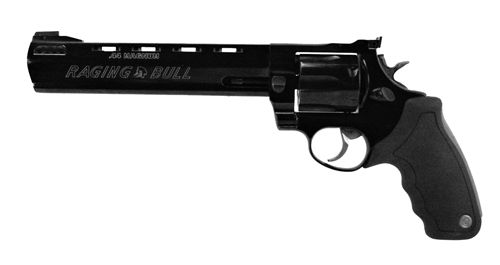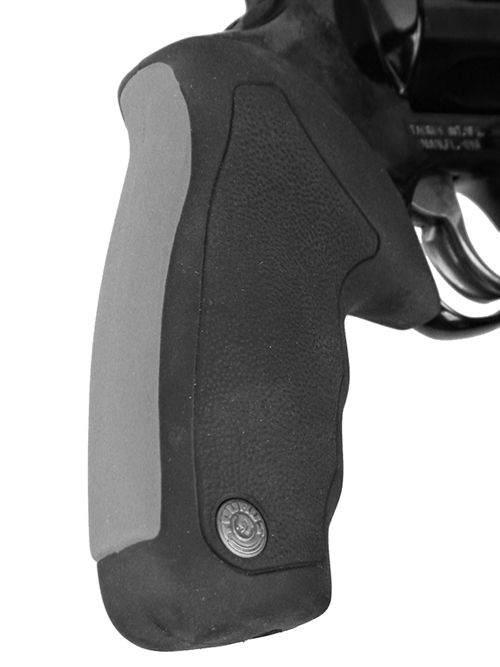
In February 2000, we tested the Raging Bull model, which was designed to take the pounding of the newest grenade on the block, the .454 Casull. At the time, the Bull was built on a new larger frame that was fit with a heavy 8 3/8-inch barrel. The barrel featured a deep full-length underlug and porting. The cylinder was braced with a second latch on the crane. The grip was also a new design with a shock-absorbing insert along the backstrap. Each of these features were carried over to subsequent chamberings, which today include .454 Casull, .41 Magnum, 500 Magnum and of course the subject of this test, .44 Magnum.
Given that construction was the same for our .44 Magnum as it was for the original .454 Casull Raging Bull, we would expect durability from this gun. In fact throughout our tests none of our guns experienced a failure of any kind. The blued finish that distinguished our Taurus from our stainless-steel test guns proved durable, holding up to a couple of gaffs where we unceremoniously dropped the gun—once out of a tree and another time on to the door frame of a gun safe. Built to handle the Casull, we also expected our Raging Bull to be the most comfortable to shoot in .44 Magnum. This assumption turned out to be correct. Even when shooting fully locked-in over a bench, felt recoil from the Taurus was the least abusive among our test guns. The single-action trigger did not offer any type of take-up and the action was grit free. The double-action trigger was also clean and consistent from shot to shot.

When preparing to load the Raging Bull, we had to remember to work the two cylinder releases mounted on the left side of the frame simultaneously. The frame-mounted latch to the rear needed to be pushed forward with the thumb. The latch on the yoke, which swings outward with the cylinder, needed to be pushed upward. The ejector rod did not take part in lockup. All three revolvers shielded the ejector rod in a cavity machined into the underlug.
The rear sight was fully adjustable for windage and elevation. Its rearward face was not grooved to diffuse light, but it was slanted to the rear to reduce glare. This helped us peep through the rear notch and find a clean picture of the front sight, which was a plain black rectangle. The rear-sight blade appeared to be fragile, in our view, and its edges were unprotected. But the front sight was long and firmly mounted upon a stanchion. Regarding facility for a scope, Brownells lists a drill-and-tap scope mount for $30 from Weigand Combat. Taurusoffers a $50 scope mount that bolts on using brackets that weave through the vents that run along the top of the barrel.
Firing offhand, standing or seated, our testers found the Raging Bull to be well balanced. Taurus did their homework in designing the grip, which offered finger grooves and a subtle but effective palm swell. This made it easy to hold the gun on target.
From the bench the Taurus Raging Bull was the top overall performer. We shot groups averaging about 1.5 inches across with two of our three test rounds under conditions that were fair at best. The Bull also had the two best groups of our test, 1.1 inches and 1.2 inches, respectively. If any of our test guns was in tune with heavy recoiling ammunition, we think it would have to be the Taurus Raging Bull.

























